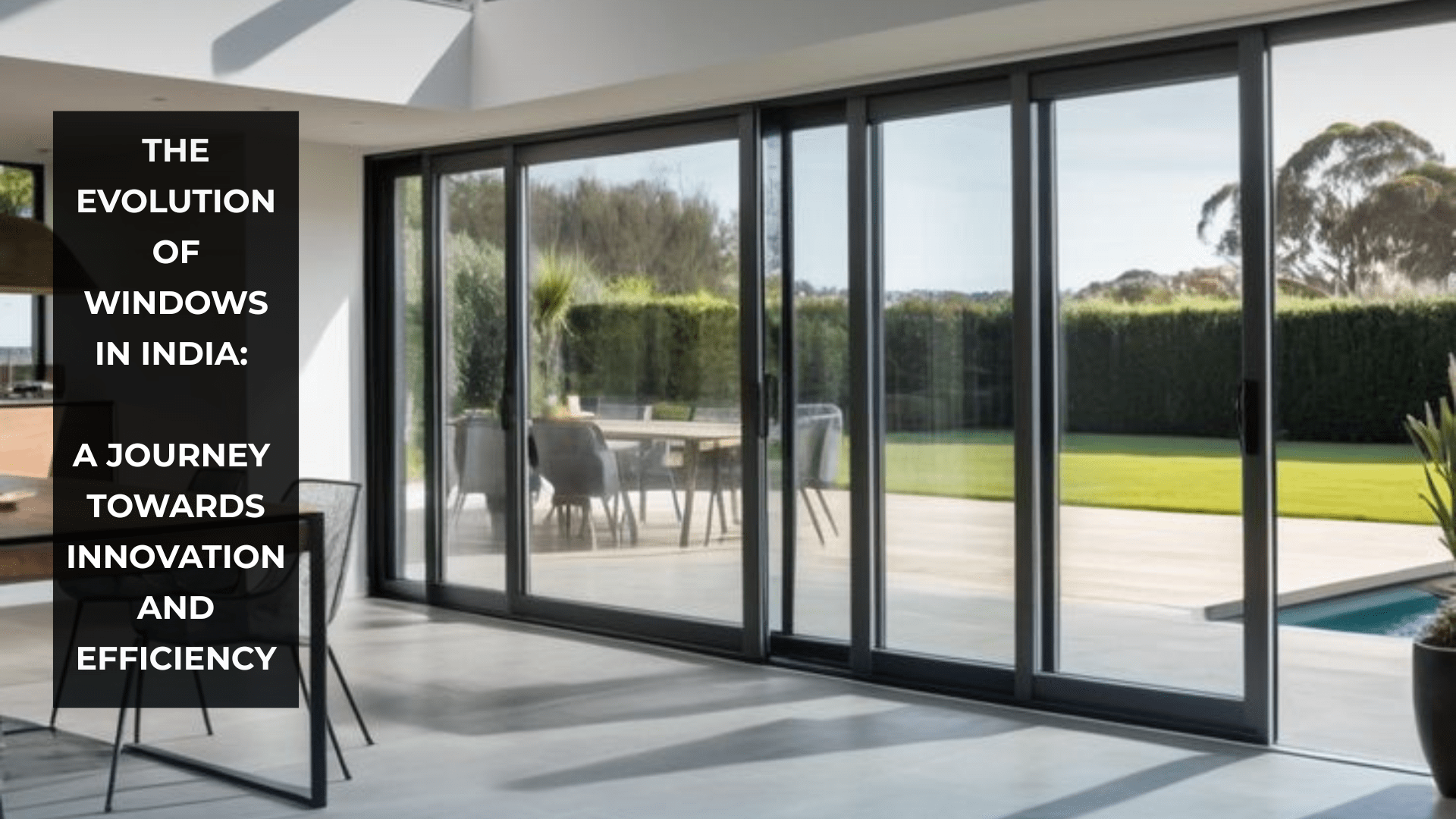
Windows used to be simple a small opening in the wall to let in light, air and most importantly to see if the outside was safe to step out. But today, they’re so much more. They shape how our homes look, how much energy they use, and how comfortable we feel inside. In India, the journey of windows has evolved dramatically over the past few decades. From basic wooden frames to sleek, high-performance aluminium systems, we’ve come a long way. Let’s take a quick look at how this transformation happened.
In the 1980s, if you visited most Indian homes, you’d find wooden or steel windows. The sizes were small around 4’x4’ or 6’x4’ just enough to bring in some air and sunlight.
Wood was easily available, certain varieties of wood was cheap. Teak wood was considered premium and extremely looked good. Steel was strong and felt safe, especially with safety grills.
But they came with issues:
As cities grew taller with high-rise buildings, using wood and steel became challenging because of their weight, rust, and need for regular upkeep. That’s when things started changing.
Aluminium windows first appeared in the early 1980s, but it wasn’t until the 1990s that they started catching on. At first, people doubted whether aluminium was strong enough or safe. But as high-rise buildings became more common, the benefits of aluminium became clear. In the late 1990s uPVC (unplasticized polyvinyl chloride) also entered the Indian market. The major challenge was to overcome fear of fire. but by mid 2000s, uPVC became a popular choice because:
Aluminium windows became more popular as well because they were strong, lightweight, and resistant to rust perfect for taller buildings. By 2010, aluminium systems were on the rise, while uPVC started to plateau.
That’s why today, aluminium is the most preferred choice for windows and doors in both homes and commercial buildings.
Cities can be loud with traffic, construction, and the hustle and bustle. That’s where soundproof aluminium windows help. With double-glazed glass and insulation, they help block out the noise, creating a calm and peaceful home.
While aluminium windows entered the market in the 1980s, it took a while for them to gain trust. People thought they weren’t strong enough or safe. Over the years, various companies worked hard to prove that aluminium was the best choice.
With rapid urbanization, the Bureau of Indian Standards (BIS) worked with architects, developers, and system companies to develop standards for windows and doors suitable for the Indian climatic conditions making sure they meet high performance for things like:
Today, aluminium windows are not only stylish but also safe, durable, and high-performing.
Over the years, improvements in powder coating technology have given aluminium windows a big edge. Now, they come in a wide range of colours, and superior hardware makes them even stronger. Aluminium frames are sleek, lightweight, and have a high strength-to-weight ratio, making them the top choice for modern homes and commercial spaces.
At PROCURAL, we’ve been a part of this incredible transformation. Whether helping architects design stunning facades or supporting builders with reliable, tested systems, we’re with you every step of the way. Let’s create smarter, stronger, and more beautiful windows together.
📞 Contact us: +91 8374092061
📧 Email: connect@procural-group.in
🌐 www.procural-group.in
The company is registered in the District Court for Łódź Śródmieście in Łódź, XX Commercial Division of the National Court Register under KRS number 0000060249. Share capital: PLN 1,342,490.00, NIP: 7741008197 , BDO: 000042079. PROCURAL Sp. z o. o. has the status of a large entrepreneur within the meaning of the provisions of the Act of 8 March 2013 on counteracting excessive delays in commercial transactions.